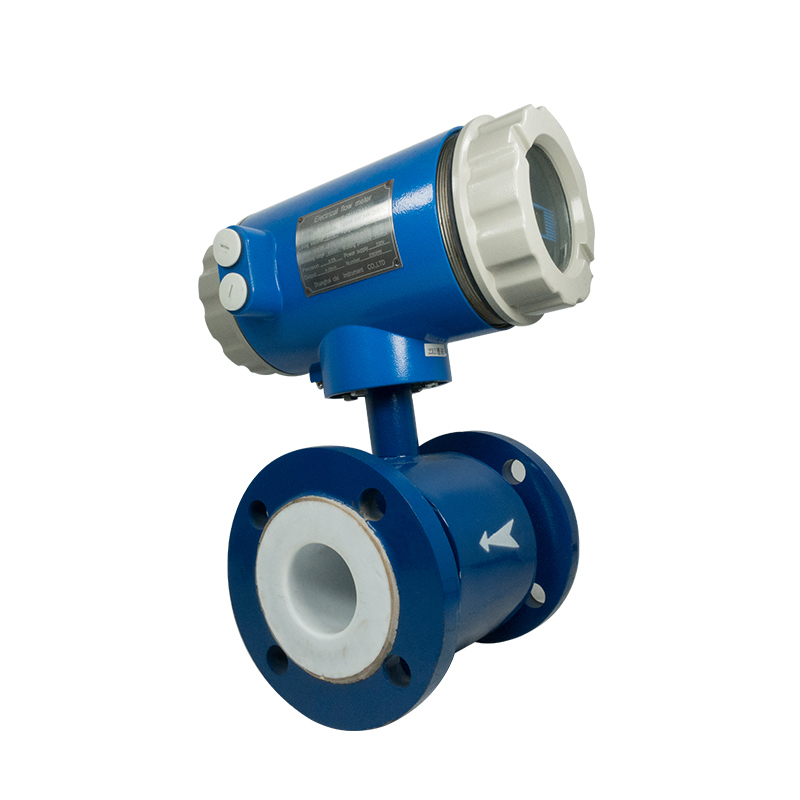magnetic flow meter principle
The working principle of
electromagnetic flow meter is mainly based on Faraday's law of electromagnetic induction. Specifically, when the conductive liquid moves in the
magnetic field and cuts the magnetic field lines, an induced electromotive force E perpendicular to the direction of movement and the direction of the magnetic field will
be generated at both ends of the conductor. This induced electromotive force E is proportional to the flow rate V of the conductive liquid and can be expressed as
E = BLV, where B is the magnetic induction intensity, L is the length of the conductor, and V is the speed of cutting the magnetic lines of force.
In the electromagnetic flowmeter, the conductive medium in the measuring tube is equivalent to the conductive metal rod in the Faraday test, and the two electromagnetic
coils at the upper and lower ends generate a constant magnetic field. When a conductive medium flows through it, an induced voltage is generated. This induced voltage
will be measured by two electrodes inside the pipeline and converted into a standard signal output through a converter to achieve flow measurement.

Electromagnetic flow meters have many advantages, such as measurement is not affected by changes in fluid density, viscosity, temperature, pressure and conductivity;
there are no flow-impeding parts in the measuring tube, no pressure loss, and low requirements for straight pipe sections; it has good corrosion resistance and Wear
resistance; the converter has low power consumption, stable zero point, and high accuracy; it has self-test and self-diagnosis functions. Therefore, electromagnetic
flowmeters are widely used in the measurement of various fluid flows, especially in sewage treatment, chemical industry, petroleum, pharmaceutical and other fields.
Welcome to consult CIXIFM winny:
Email:sales01@cxflowmeter.com
Whatsapp:008618049841995

